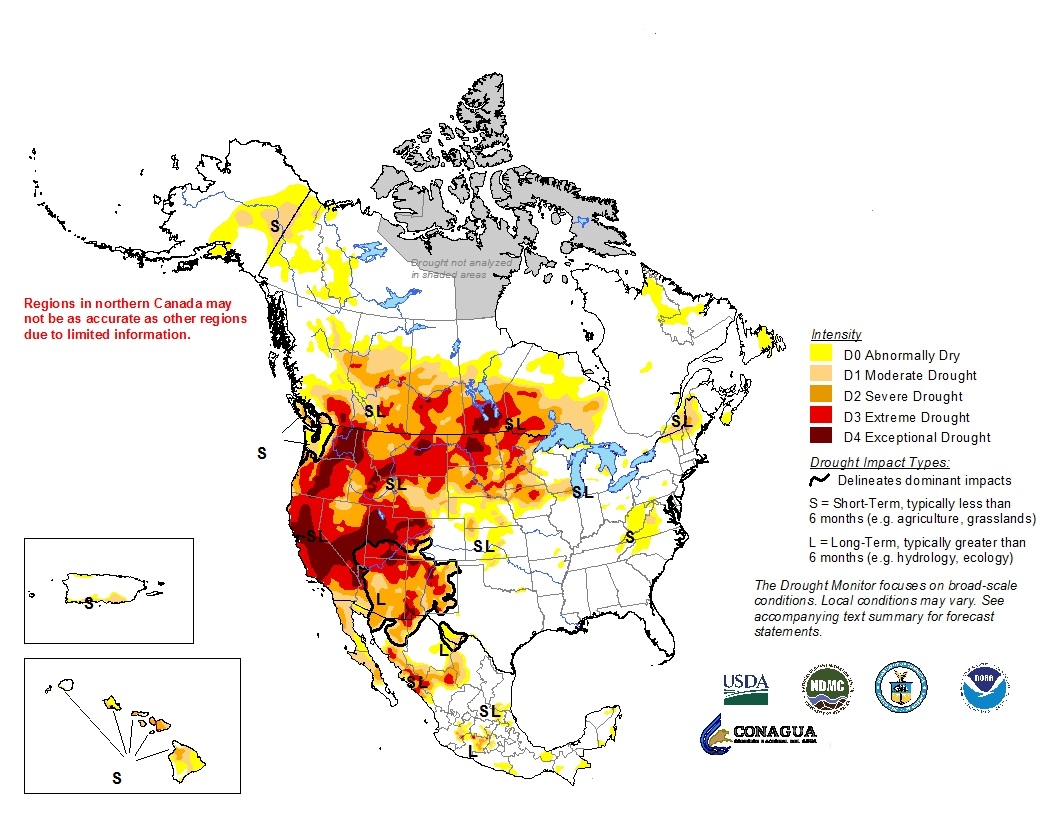Drought in North America Leads to Cattle Herd Liquidation
According to CanFax, western Canada culls 10% to 12% of its breeding stock due to age or other routine reasons, and these volumes are mostly replaced. However, according to Alberta Beef Producers, this year, cattle ranchers are set to cull 20% to 30%, reducing the size of herds. That would be the most significant reduction of breeding stock in the region since 1970.
The extent of the drought
The majority of the Western US is suffering a severe drought of historic proportions. The worst conditions are in California and the Southwest, with farmers and ranchers most affected. The drought also extends into the Pacific Northwest, the Intermountain West, and the Northern Plains. The government has implemented water cutbacks in the affected areas. Large wildfires burned earlier than expected in Arizona, New Mexico, and other states. An entire town burned in British Columbia, Canada, while a record number of acres could burn in California in 2021. In North Dakota, cattle ranchers are transporting water and supplemental feed for their livestock due to the dryness of the rangelands and the stunted vegetation.

Drought map for July 31, 2021 (Source: North American Drought Monitor)
Reduced cattle supply set to raise prices
Slaughtering female cows instead of breeding them could reduce market-ready cattle supply in 2023. Cattle have long gestation periods, taking time to fatten after birth. According to the USDA, the 2021 beef production forecast is 27.872 billion pounds. The forecast has dropped by 33 million pounds due to the effects of the drought on carcass weights. According to Statistics Canada, following the drought in 2014, Canadian beef prices rose by around 25% over the following year and remained high for at least two years. Beef prices could rise this fall, reflecting the increased cost to feed cattle.
In Mexico, the northern state of Chihuahua went from around 1.2 million breeding cows in 2019, to about 700K due to the drought. Similar rates of drought-induced slaughter occurred in the northern Mexican ranching states of Sonora, Coahuila, Nuevo Leon, and Durango. Large numbers of cattle have died on parched land due to a lack of food or water. The most affected ranches in northern Mexico could take two to four years to recover herd levels. Reduced Mexican cattle supply could also impact the US beef supply, as the US imports over a million cows from Mexico yearly. The drought will also affect feedlots, which purchase cattle from ranchers and fatten them for slaughter.
Sources:
- North American Drought Monitor. “Map for July 31, 2021.”
- New York Times. “The Western Drought Is Bad. Here’s What You Should Know About It.”
- Reuters. “Drought forces North American ranchers to sell off their future.”
- Beef 2 Live. “U.S. Beef Production By Year (USDA).”
- USDA. “Market Outlook - Cattle & Beef.”